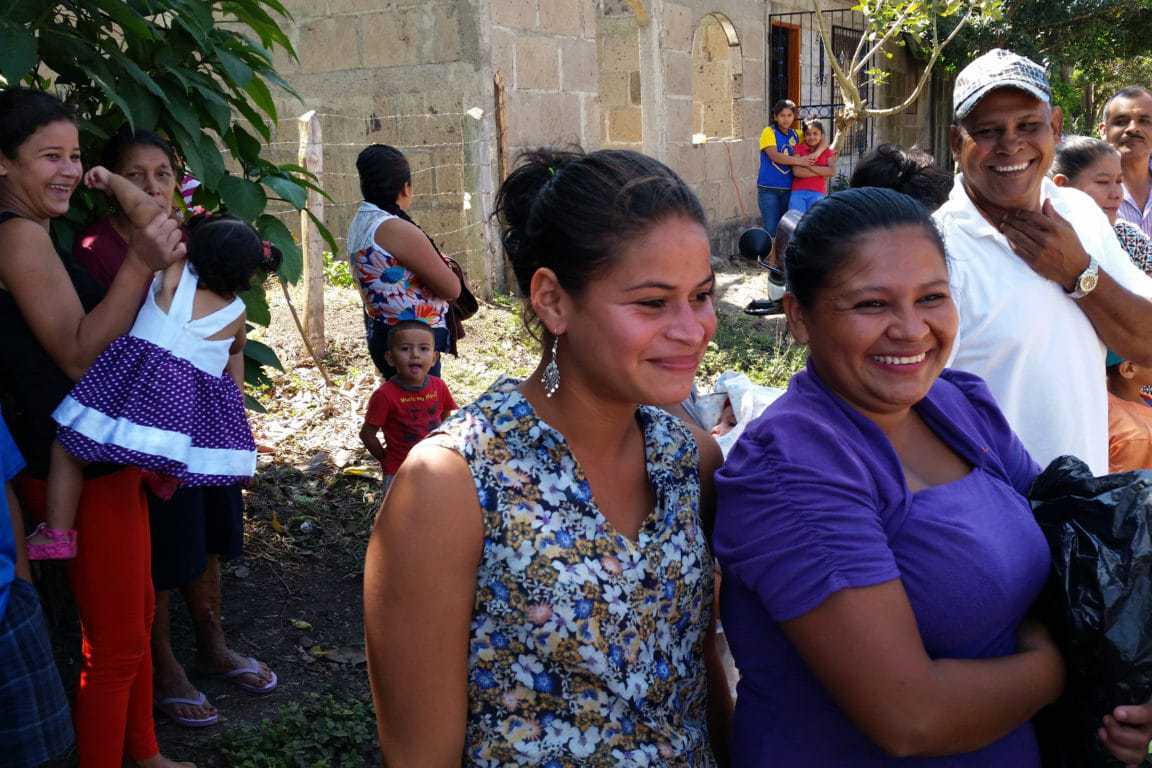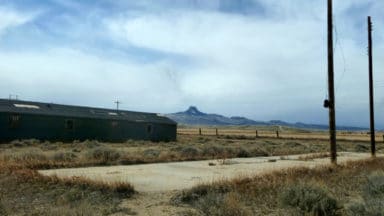Marili and Dave Reilly didn’t spend their winter vacation relaxing as they normally would. No, this year, they spent their winter vacation hauling cement blocks and buckets of water in the tiny rural town of Camoapa, Nicaragua.
They were part of a seven-member group of retired people from St. Michael & All Angels Episcopal Church in Northeast Portland. The youngest member was 58 and the oldest nearly 70, an impressive age range for urbanites unaccustomed to hard labor.
The group traveled under the auspices of El Porvenir, a nonprofit organization whose mission is to provide water and sanitation projects in poor communities where there is no such thing as plumbing. The Portland group was to build 17 latrines over a period of seven work days. They worked in crews of two to three members, plus the Nicaraguan homeowner who sometimes helped, and a skilled cement mason provided by El Porvenir.
They rode to work each day in the back of a pick-up. On the way they passed women carrying large water jugs on their heads, alongside drainage ditches littered with plastic and paper, and yards inhabited by fat pigs and skinny dogs. Gillian Butler, one of the St. Michael’s volunteers, described the barrio (neighborhood) where they worked in Camoapa as “not totally squalid, but primitive. Some of the houses had electricity, but there was no running water. And no toilets.”
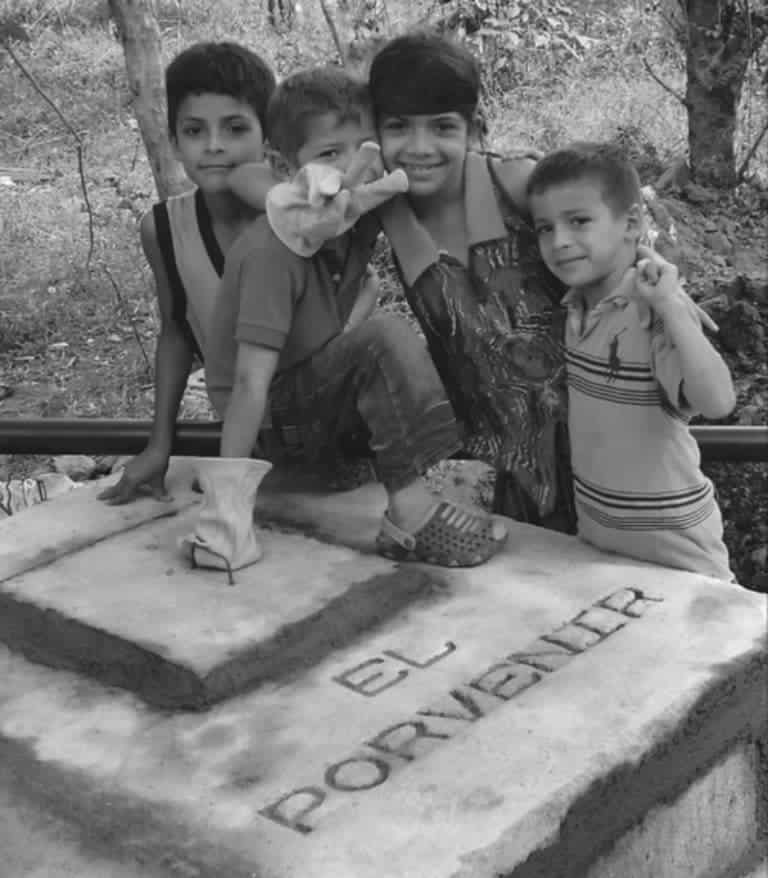
This was rural Nicaragua — and it was poor.
The work was hot, gritty and exhausting, but the volunteers fulfilled their mission. At the end, they felt they received more than they gave.
El Porvenir is Spanish for “the future.” The organization, founded in 1990 and headquartered in Managua, also has an office in Denver. Their main purpose is to improve the standard of living for rural Nicaraguans. Volunteers work together with local families to build community wash stations called lavanderías, dig wells, and build la-trines. Some groups also install fuel-efficient stoves and plant trees. The cost to volunteer is $1,175 for a 10-day trip, which includes lodging and all meals, transportation within Nicaragua, health and travel insurance, a full-time translator, and cultural and recreational activities. The website, www.elporvenir.org, gives additional information, including the advisory: “Good health is required to participate.”
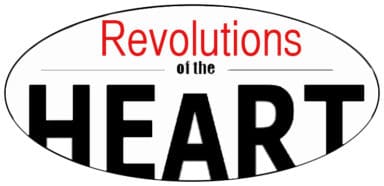
El Porvenir took good care of the Portland volunteers. In-country staff members Rosi and Jimmy acted as interpreters, and José made sure they had fresh filtered water to drink and brush their teeth. His mom, Catalina, arranged tours and recreation, and inspected the kitchens for cleanliness.
Groups from Saint Michael & All Angels have been going to Nicaragua for 15 years. This year they stayed in a simple but comfortable new hotel, which replaced the more rustic lodging of previous years. Bruce Collins was making his third trip, Hjalmer Lofstrom his fourth, and Mary Lou Hennrich her fifth. For Mary Lou’s husband David Still, Gillian Butler, and Marili and Dave Reilly, it was their first time in Nicaragua.

St. Michael’s involvement began around 2000 when Marla McGarry-Lawrence, St. Michael’s deacon at that time, was contacted by Carole Harper, one of the founders of El Porvenir. In a recent phone interview, Marla told me how she decided years ago that the best way to develop ties with her fellow Americans south of the border was not through conventional tourism but with a deeper involvement, by working side-by-side with the Nicaraguan people. El Porvenir was the answer.
“We’re not the teachers,” Marla said, “We’re the learners. We’re also their friends. We feel such gratitude for the people who open their homes and their lives to us, and we honor who they are with deep respect.” In rural Nicaragua she realized the importance of clean water. “Dirty water kills,” she observed. “Especially when mothers mix baby formula with water that isn’t sterilized. The infants develop diarrhea, which is so hard to control.”
Marla had been to Nicaragua five times when she and her husband, Gary, stopped going after his 2008 heart surgery.
“I saw what we were doing as very deeply connected to baptism,” she said, “the cleansing of the water, water that restores us. This is how we can live out our baptismal promise of making the world a more just and equitable place.”
Nicaragua is one of the poorest countries in the Western Hemisphere, second only to Haiti. Nearly half the population lives below the international poverty line, which until recently was $1.25 a day. The official unemployment rate is 7 percent, but 47 percent are considered underemployed. The situation is more desperate for the youth, where 40 percent are either unemployed or work in the “informal” sector.
The nation’s economic development was stifled by decades of the brutally repressive Somoza regime, supported by the U.S. government. Then during the 17 years of the Sandinista revolution, the country suffered a devastating earthquake that destroyed its industrial base in Managua.
The Sandinista revolution was finally victorious in 1979, but it was followed by 10 years of “Contra” wars. What was publicized in the U.S. as a civil war was really a return of Somoza’s brutal National Guard, attacking the schools, clinics and land cooperatives newly established by the Sandinista government. The Contras were a military force funded by the U.S. and, after the funding was withdrawn, covertly supported by the C.I.A. As if this were not enough, Hurricane Mitch in 1998, the resulting floods and more earthquakes have added to the collective misery.
To this day the Nicaraguan people, though proud and stalwart, are still very poor.

On her first El Porvenir trip in 2001, Marla’s group went to Matagalpa to visit the grave of one of Nicaragua’s most beloved heroes, Ben Linder. As a young, idealistic engineer from Portland, Linder had moved to Nicaragua in 1983 to create small hydroelectric systems for impoverished rural communities. Delightfully eccentric, he doubled as a clown and a unicyclist, enchanting the children and permanently imprinting himself on the hearts of the Nicaraguan people. In 1987, while peacefully “turning water into light” in a remote village, Linder became the first American citizen to be killed by the U.S.- funded Contras.
The 2016 St. Michael’s team was drawn to Nicaragua for several reasons. Gillian Butler had been aware of the struggles of Central Americans during the 1970s and 1980s. “I remember the (Sandinista) Revolution, and how excited all of us were on the left,” she said. “And then I was appalled that the U.S. was supporting dictators and death squads.” Gillian was a member of the Portland Central American Solidarity Committee (PCASC). She marched in protest of U.S. policies, and her car wore a bumper sticker that read: El Salvador Is Spanish for Vietnam.
Marili and Dave Reilly, being recently retired, wanted to do something worthwhile for those not as fortunate. “Clean water should be available to everyone as a human right,” Dave told me.

On his previous trips to Nicaragua, Hjalmer Lofstrom had observed that in rural areas, women and children relied on creeks and river water for drinking, cooking and washing clothes. Because hauling water would take a significant portion of their daylight hours, the children would be taken out of school to help. But after El Porvenir had been to the village, things were different.
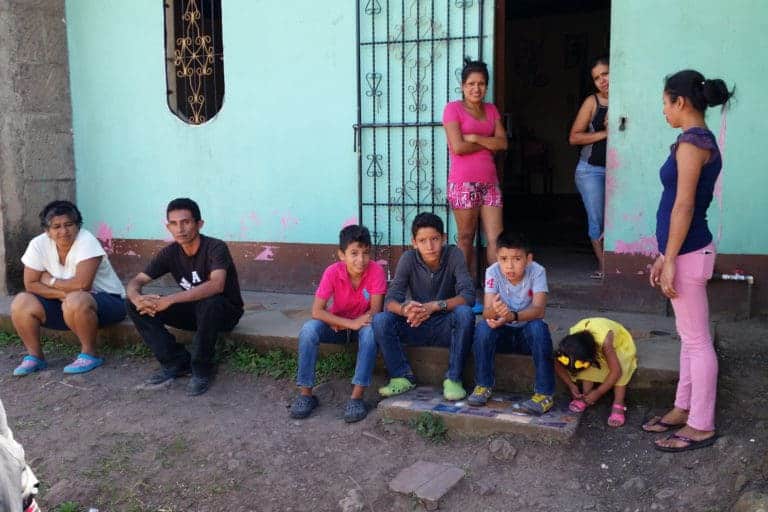
“As we returned to former village projects we learned there had been a significant reduction in children being ill,” Hjalmer told me. “With a closer clean water source and improved sanitation the women have more time to give to their families. They’re now finding the time to add to their family income by making and selling their handcrafted wares. Some of the young women who dropped out of school are now returning and graduating.”
In this way, these clean water projects can lead to economic stability.
A project begins when a rural community identifies a need and makes its proposal to El Porvenir. Sanitation projects usually precede wells and lavanderías to make sure that the water will not become contaminated. In the case of the Camoapa barrio, the home owners were required to provide the tools and to dig a hole in their back yard 4 x 6 x 8 ft. deep. Seventeen holes awaited the St. Michael’s group, who carried cement blocks weighing from 30 to 70 pounds to each hole. Then the volunteers set about mixing sand, water and cement powder into a grout. A team of professional masons hired by El Porvenir worked down in the holes, receiving the cement blocks and the buckets of grout, and forming the walls of the latrines. The latrines consisted of two vaults: one would be used for 10 years while being treated with lime, at which point it would be capped and the other used for the next ten years. By that time the first vault would be safe to use again.
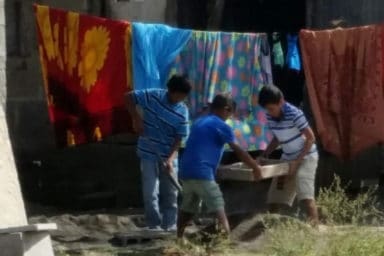
The construction process was challenging for the St. Michael’s group. Tools were always in short supply, often broken, and inadequate by U.S. standards. According to Dave Reilly, “We’re used to working around good equipment and technology. This was manual labor. It was frustrating at times because this is not the way we do it.”
“El Porvenir’s focus is on making the water clean. It’s not a tool provision organization,” he said with a smile. And the volunteers come to villages like Camoapa to work alongside local people, doing things the way they do them, not to bring in bulldozers and loaders to do everything for them.
In between the labor were other rewards, including hearing from Aynn Setright, her history and politics.
Setright had first gone to Nicaragua with Witness for Peace in 1985. She spent two years driving an ambulance, picking up wounded from either side, both Contras and Sandanistas, as well as people with ruptured appendixes and victims of farm accidents. She ended up falling in love with the Nicaraguans, one in particular, and now lives in Managua with her husband and adult children.
The Nicaraguans seemed to reciprocate the love of these hard-working gringos. The group was interviewed on local TV three times by two very serious newscasters. Local children, who were on a school holiday at the time, also enjoyed the St. Michael’s group. While the adults were mixing cement and hauling the huge blocks, the kids “helped” by sifting sand and jumping off the piles of dirt. At the end of the visit the volunteers returned to the barrio where El Porvenir had arranged a piñata party. All the homeowners, neighbors and kids were there. The North Americans handed out bags of candy to the children, and the homeowners gave their guests little multicolored straw fans as mementoes. This time everybody got to play.
You might ask why anyone would want to go to a poor, hot, mosquito-infested Central American country and haul cement blocks, especially if they have already reached the age when they can take life easy. This adventure certainly isn’t for everyone. But working together with people from another culture offers unique opportunities. It involves learning to work their way rather than ours and letting go of the American obsessions. This kind of opportunity can go a long way toward opening a person’s eyes and heart. It also allows U.S. citizens the chance to make a gesture of apology for the suffering our nation caused the Nicaraguan people over so many decades. In the Episcopal worship service we sometimes confess not only the evil we have done but “the evil done on our behalf.”
Except for the occasional controversy about possible privatization of its water system, Portland residents continue to enjoy the pristine, unfiltered water from the federally owned Bull Run Watershed. Clean water certainly is one of the most important public health accomplishments in the Western world, yet it’s a blessing many of us hardly even notice.
After four trips with El Porvenir, Hjalmer Lofstrom has many memories and enduring relationships with families in Nicaragua.
“When I turn on my shower or open the tap for a drink of water I am reminded of their needs,” he said. “But also I’m reminded of those villagers whose lives have been permanently changed by something so simple as people giving to people.”
